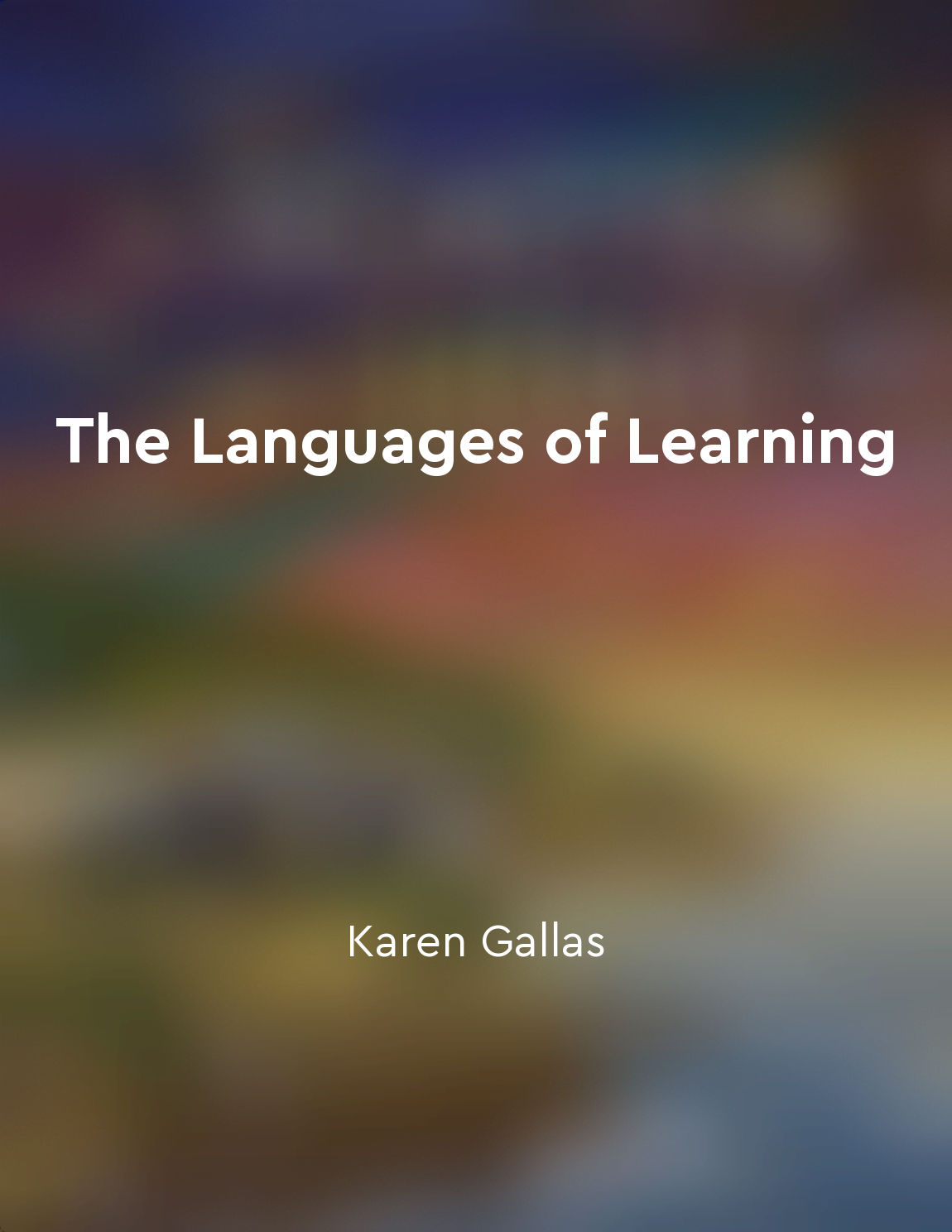Teachers must engage with children's languages to truly understand their learning from "summary" of The Languages of Learning by Karen Gallas
When teachers immerse themselves in the languages used by children, they gain a deeper insight into the ways in which young learners make sense of their world. Through actively engaging with the diverse linguistic resources that children bring to the classroom, educators can better understand the unique perspectives and experiences that shape each child's learning journey. This understanding is crucial for creating meaningful and effective learning opportunities that resonate with students on a personal level. By listening to and valuing the languages that children use both inside and outside the classroom, teachers can build stronger connections with their students. This connection goes beyond mere communication; it fosters a sense of belonging and trust that is essential for creating a supportive and inclusive learning environment. When teachers acknowledge and celebrate the linguistic diversity present in their classrooms, they send a powerful message that all languages are valuable and worthy of respect. Moreover, engaging with children's languages allows teachers to uncover the rich cultural and social contexts that shape students' identities. Language is not just a tool for communication; it is deeply intertwined with one's sense of self and belonging. When teachers take the time to explore and understand the languages that children bring to the learning space, they open up new possibilities for meaningful learning experiences that honor students' backgrounds and lived experiences. Furthermore, by embracing children's languages in the classroom, teachers can create opportunities for cross-cultural learning and collaboration. When students see their languages and cultures reflected in the curriculum, they are more likely to feel motivated and engaged in their learning. This sense of connection and relevance can empower students to take ownership of their learning and actively participate in the educational process.- Teachers who engage with children's languages demonstrate a commitment to honoring and valuing the diverse linguistic and cultural backgrounds of their students. This practice not only enriches the learning experience for students but also deepens teachers' understanding of how language shapes learning and identity. By embracing children's languages, educators can create a more inclusive and empowering educational environment where every student feels seen, heard, and valued.


